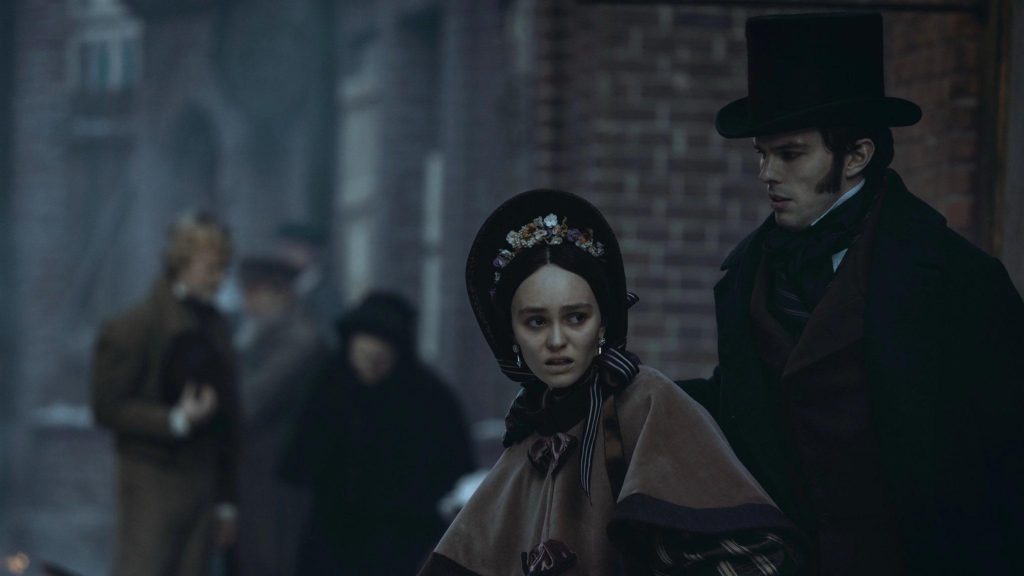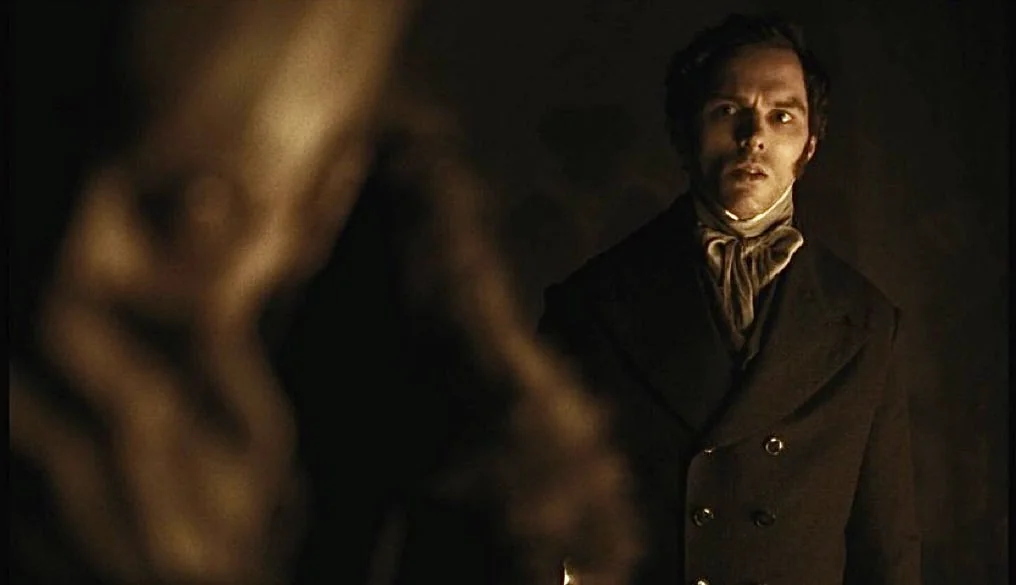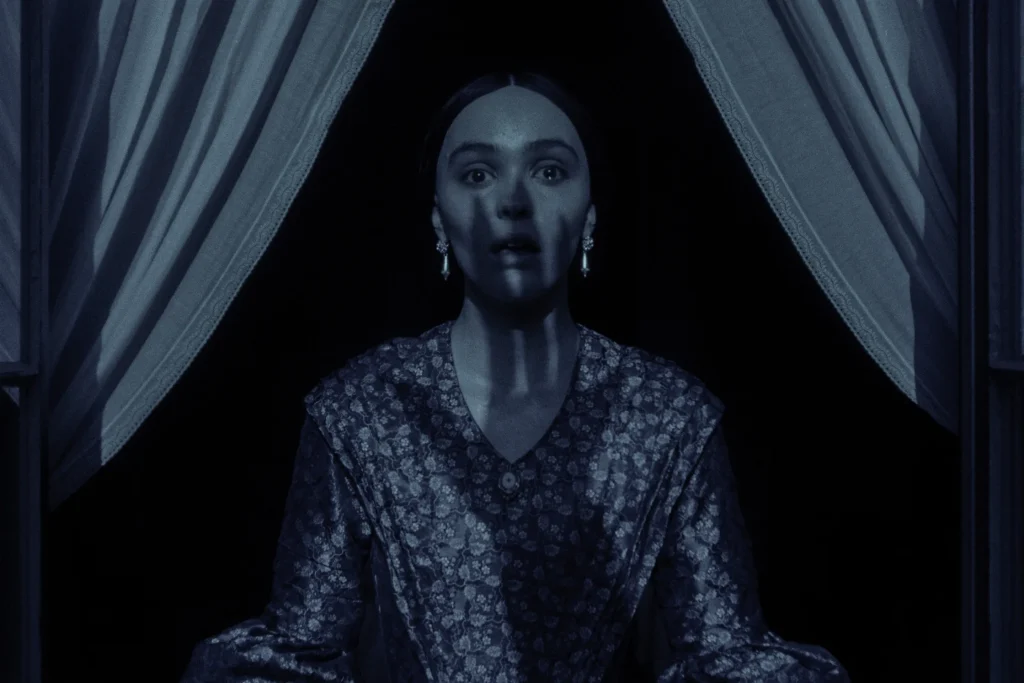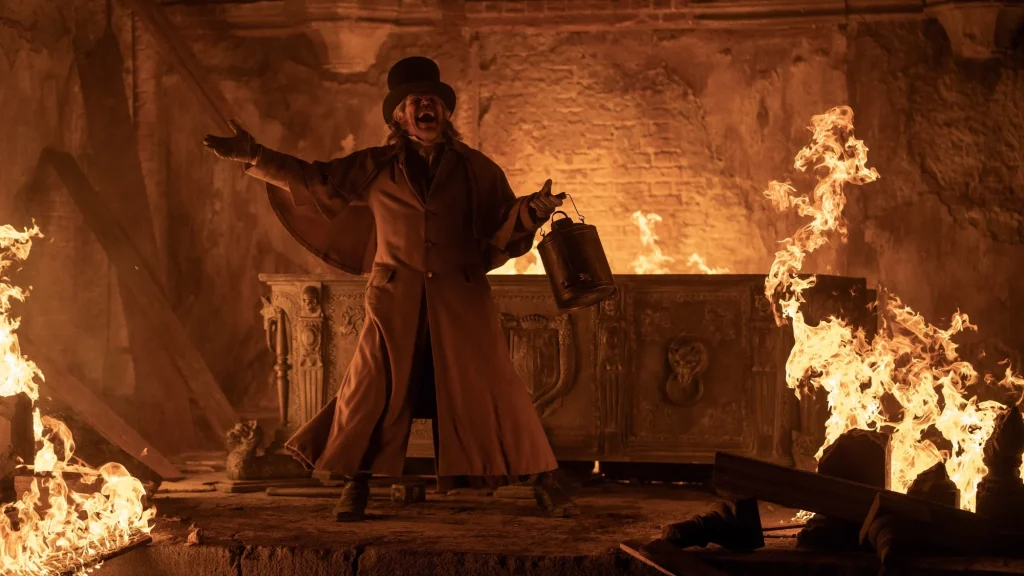
If ever there was a film to remind audiences of what a gothic masterpiece should feel like, Robert Eggers’ Nosferatu stands as a resounding statement. This isn’t just a tribute to the classics, nor is it a hollow retelling of an already immortal story. It’s an experience that plunges you into a boney, gothic embrace, where the scent of damp wood, faint garlic, and burning wax mingle with the heavy weight of history. It’s as though the fabric of time itself has been draped over the screen, pulling us into an era where shadows are characters and light is the language they speak.
In this new adaptation of the seminal tale, Thomas Hutter (Nicholas Hoult) journeys to the bleak and ominous land of Count Orlok (Bill Skarsgård) under the guise of securing a real estate transaction. What unfolds, however, is a story of obsession, hunger, and a dark allure that threatens to consume everyone it touches. At the heart of the tale is Ellen (Lily-Rose Depp), whose presence and fate draw the Count closer into their lives, setting the stage for an intricate dance of seduction, horror, and tragedy.
From the opening credits, Eggers wastes no time immersing his audience into a world that feels tangible. The authenticity in the production design is staggering; it’s not just about the period-accurate wardrobe but also the very air the characters seem to breathe. The streets glisten with rain-soaked stones, the interiors exude the weight of heavy fabric and aged wood, and even the faintest flickers of candlelight seem carefully choreographed. This isn’t just production design—it’s world-building.
The use of light and shadow transcends mere cinematography and becomes an active participant in the narrative. Every scene is deliberately lit to convey tension, emotion, and foreboding. In Nosferatu, shadows are not just aesthetic choices; they are storytellers and, in some moments, antagonists. The interplay between light and darkness is so pronounced that it often feels like the actors are secondary to the visual symphony playing around them.

Bill Skarsgård’s Count Orlok is a revelation. Shrouded in shadows for much of the film, his presence looms large with an eerie stillness and a voice that is both chilling and captivating. Skarsgård delivers a performance that eschews the monstrous for something far more unsettling—a predator cloaked in sophistication. His dialect, tone, and delivery are precise, creating a character that feels ancient and unknowable, and by his voice alone!
Nicholas Hoult, as Thomas Hutter, brings a quiet vulnerability to the role. While the character may initially seem underwritten for someone of Hoult’s caliber, his portrayal infuses Hutter with a subtle depth. The confusion and dread he exudes creep into the viewer, making his journey feel intimate. It’s a textbook example of Hoult’s ability to elevate even the most straightforward roles.
And then there’s Lily-Rose Depp. Her Ellen is the film’s beating heart. Depp’s performance is magnetic, layered with an authenticity that commands attention. Every glance and every movement feels deliberate yet organic. She’s not just the object of Orlok’s obsession but a character brimming with her own agency and emotional depth. It’s a performance that leaves you wanting to rewind and savor every scene she inhabits.

If light and shadow are the film’s soul, then editing is its backbone its the unsung hero. The pacing, while deliberate, is masterfully handled, allowing the audience to sink into the film’s atmosphere. The transitions between scenes are seamless, creating a flow that feels as natural as turning the pages of a gothic novel. Artistic editing, as seen here, is a delicate art, and Nosferatu manages to balance smooth storytelling with moments that jar you just enough to keep the tension alive.
Eggers’ direction is nothing short of a masterclass in how to reimagine a classic without losing its essence. He understands that the heart of gothic horror isn’t just in the scares but in the mood, the textures, and the unspoken weight of history. The attention to detail—from the ornate calligraphy of the Count’s contract to the dust that rises from an old jacket—speaks to a dedication rarely seen in modern filmmaking writing a love letter to the gothic genre.
The film doesn’t rely on CGI-heavy spectacle, which is precisely what gives it its charm and texture. The practical effects, combined with a restrained use of visual effects, create an aesthetic that feels grounded and timeless. This approach makes the supernatural elements all the more striking when they appear.
For all its strengths, Nosferatu is not without its flaws. The dialogue, while carefully crafted to reflect the period, occasionally lacks the depth needed to fully flesh out some characters. Similarly, the film’s pacing—while fitting for slow-burn horror—could have benefited from tightining in certain stretches. There are moments where the narrative stalls, leaving the audience yearning for a bit more urgency or conflict.
Additionally, while the Count’s limited appearances add to his mystique, there are instances where the balance tips too far, making his menace feel more theoretical than immediate. The film’s deliberate pacing and aesthetic focus may not resonate with viewers seeking a more conventional or action-driven vampire story.

Nosferatu is the kiss of life to contemporary cinema—a gothic horror film that feels both timeless and deeply rooted in its era. It’s a film for purists, for those who appreciate the weight of the atmosphere and the meticulous crafting of every frame. But it’s also a film for a new generation—an invitation to rediscover what true gothic horror can be, who didnt get a chance to experience Bram Stoker’s Dracula, let alone the original Nosferatu.
Fans of the genre and classic horror owe it to themselves to experience this film. And for those whose perception of vampires is shaped by sparkles and teenage melodrama, Nosferatu is a wake-up call. It’s a return to the origins, a reminder of where it all began. With its immersive atmosphere, outstanding performances, and masterful direction, Eggers has crafted a film that doesn’t just honor its predecessors but claims its place alongside them.
